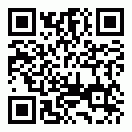
In a series of posts, I am going to introduce the reader to the existence of ISO 17025 and its importance. I am going to introduce it in bite-sized bits for easy digestion. Just like all matters of learning, knowledge is incremental over time and builds upon previous exposure.
In our last post we answered the question: What is ISO 17025?
Today we answer the question: Why is ISO 17025 needed and how is it implemented and integrated into the forensic science area?
The basic schema that has developed is that ISO sets the International Standard (IS) with other subsidiary units such as ILAC, ASTM and ASCLD/LAB issuing supplemental guide documents interpreting and/or enhancing the minimum IS issued by ISO. As this is the developed schema and hierarchy of standards, the lack of an “across the board” cross-reference from Standard to Standard does not mean that the organization does not find the matter to be unimportant and not required, but rather is an indication that the ISO 17025 standard is sufficiently stated without a need for further explanation and interpretation[i][ii].
This is evidenced by the provenance of ASCLD/LAB’s ability to grant ISO 17025 accreditation per their International Program. The ability to grant ISO accreditation originates from the following relationships. ASCLD/LAB is a “full member” of Inter-American Cooperation American Accreditation Cooperation (IAAC). ASCLD/LAB is a signatory to both the IAAC Multi-lateral Recognition Arrangement and the ILAC Mutual Recognition Arrangement. ASCLD/LAB is an active member of the National Cooperation for Laboratory Accreditation (NACLA) Accrediting bodies, which operates in accordance with ISO 17011.
[i] In fact in the Preamble to ILAC-G19:2002, it is clearly stated that: “This document does not re-state all of the provisions of ISO/IEC 17025 and laboratories are reminded of the need to comply with all of the relevant criteria detailed in ISO/IEC 17025. The clause numbers in the document follow those of ISO/IEC 17025 but since not all clauses require interpretation, the numbering may not be continuous.” ASCLD/LAB International Supplemental Requirements-Testing: 2006 reads: “General requirements for the accreditation of testing laboratories are found in ISO/IEC 17025: 2005, General requirements for the competence of testing and calibration laboratories. This document (ASCLD/LAB International Supplemental Requirements-Testing: 2006) supplements ISO/IEC 170125 and contains supplemental accreditation requirements for forensic science testing laboratories for the examination or analysis of evidence as it relates to legal proceedings… Within those sections (Sections 4 and 5), the phrase “No Supplemental Requirement” means that the American Society of Crime Laboratory Directors/ Laboratory Accreditation Board-International program of accreditation (ASCLD/LAB-International) has no requirement for accreditation in addition to the requirements specified in ISO/IEC 17025.”
[ii] In fact, ASCLD/LAB International Supplemental Requirements-Testing: 2006 Section 2 specifically references many of the guidelines referenced above.



terry Mills says:
I saw your series of articles about ISO 17025. I think this is a great idea and especially good for attorneys who work with laboratories. However, your efforts are only on ASCLD/LAB which is only one accrediting body in the USA. There are two other AB who do forensic labs. In fact FQS has been accrediting forensic labs to ISO 17025 at least five years before ASCLD/LAB did. The old ASCLD/LAB legacy program was a good start but it was not a quality system. When ASCLD/LAB finally changed to ISO then they became more internationally acceptable as an accrediting body for forensic sciences.
Justin J. McShane says:
Great point! We blogged on this very fact before in a blog entitled “Is your state crime lab accredited?”